Canon EOS RP Review
Canon EOS RP Review
A fine full-frame upgrade for Canon fans
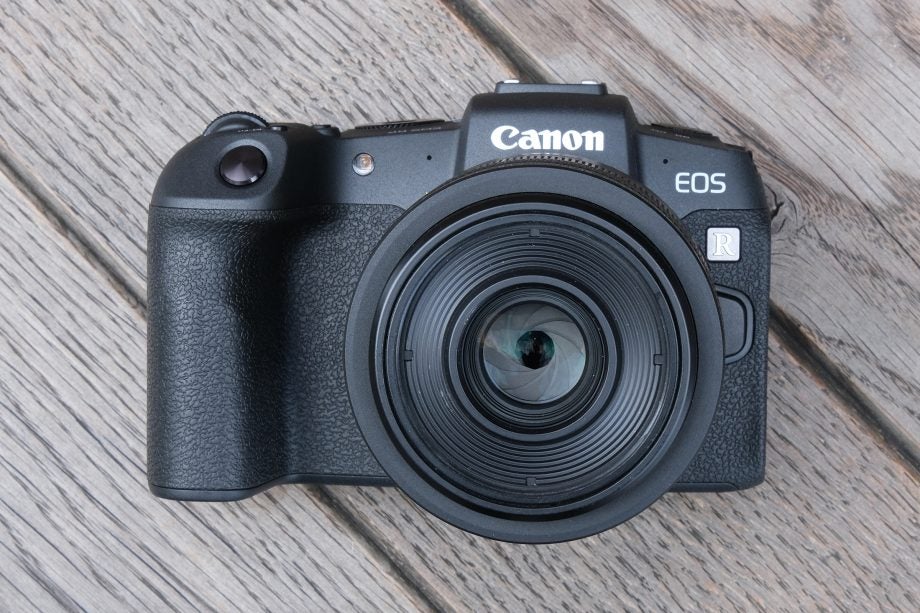
Verdict
A strong full-frame upgrade for those with older Canon DSLRs or a collections of EF lenses, but the EOS RP's older sensor and 4K video limitations mean those starting from scratch should consider an older rival like the Sony A7 II or an APS-C alternative like the Fujifilm X-T3.
Pros
- Shoots excellent JPEGs
- Works well with EF lenses via bundled adaptor
- Small and light for a full-frame camera
- Very easy to use
Cons
- Feels a little unbalanced with larger lenses
- Doesn’t have in-body image stabilisation
- Average battery life
Key Specifications
- Review Price: £1399
- 26.2-megapixel full-frame sensor
- Compatible with RF lenses or EF and EF-S lenses via included adaptor
- 2.36m-dot electronic viewfinder
- 5fps continuous shooting
- 3-inch fully articulated touchscreen
- Weighs only 485g (with battery and card)
What is the Canon EOS RP?
The EOS RP is Canon’s smallest, lightest and most affordable full-frame camera so far.
In many ways, it’s like a mirrorless version of Canon’s 6D Mark II DSLR. That camera proved popular with amateur snappers looking to step up from an APS-C camera to full-frame shooting without needing to remortgage.
The EOS RP inherits the same 26-megapixel CMOS sensor as that camera but builds all the advantages of mirrorless around it, including an EVF, three-inch articulating touchscreen, and Eye-AF that now works in continuous shooting modes (as well as video).
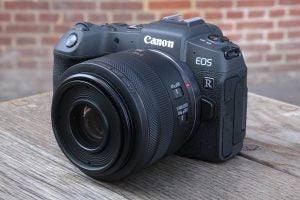
It’s also much smaller and lighter than its DSLR sibling, weighing in at just 440g – not much more than a mid-range APS-C camera like Canon’s own EOS M50, and considerably less than the hulking 765g mass of the 6D Mark II.
This makes it a tempting ‘downsizing’ upgrade for existing Canon DSLR owners with EF or EF-S lenses. The trouble is, Canon is far from the only manufacturer making full-frame mirrorless cameras, and even APS-C cameras like Fujifilm’s X-T3 are starting to compete with larger sensor rivals in terms of performance.
So is it a better option than those cameras or the Canon EOS R? That depends a bit on what you already own and what you like to shoot…
Related: Best mirrorless camera
Canon EOS RP – Design
For a full-frame camera, the EOS RP is very small and light.
The good news is that, unlike many mirrorless cameras, this doesn’t come at the expense of handling. As you’d expect from Canon, the EOS RP has a chunky, nicely sculpted grip that feels great in the hand – if you’re coming from a DSLR, you’ll feel right at home.
This is helped by a very familiar and intuitive control layout, with two electronic dials on the top for tweaking exposure – one for your forefinger near the power button, and another at the back of the top plate for your thumb.
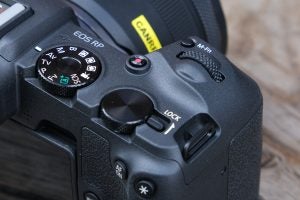
Gone is the controversial capacitive Touch Bar slider seen on the EOS R which, like Apple’s MacBook Pro Touch Bar, struggled to establish any essential use case.
Instead, the EOS RP gives you a much more useful ‘Dial Function’ menu, which you open by pressing the ‘M-Fn’ button next to the shutter-release. Whether you’re using the viewfinder or screen, this brings up two rows of settings (for ISO, Drive Mode, AF mode, White Balance and Exposure Compensation) that you can scroll through using the two control dials – the top one using your forefinger, and the bottom one with your thumb.
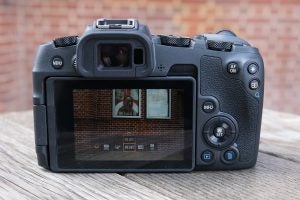
It’s an excellent control method that, along with the Q Menu for more specific tweaks, makes changing settings quick, easy and entirely possible to do without moving your eye away from the viewfinder.
Are there any downsides to the design? A few, but nothing major. I missed having an AF joystick to move the focus point, though this is easy to do via the touchscreen even when using the EVF.
The camera body, which is a plastic shell over a magnesium alloy body, also doesn’t feel super-premium or have the weather-sealing you’ll find on a 6D Mark II (although Canon does promise a degree of splash- and dust-resistance on a par with the mid-range EOS 80D).

The EVF’s 0.7x magnification and resolution is also only average for the price and, while the overall handling is good, the EOS RP did feel most balanced when using one its smaller native lenses like the Canon RF 35MM F1.8 Macro IS STM. Canon’s other native RF lenses feel a tad on the large side, though you can adapt EF or EF-S lenses with the bundled EF-EOS R adaptor.
Those minor issues aside, the EOS RP’s design is a success, particularly for those looking for a smaller, upgraded incarnation of their older Canon APS-C DSLR. That 3-inch articulating touchscreen, and the presence of both headphone and microphone ports, also make it a high-end option for vloggers too – though are video limitations that hit its appeal here, as we’ll discuss in the next section…
Canon EOS RP – Features and performance
The EOS RP’s overall feature set and performance is impressive, if slightly short of the high standards set by mirrorless rivals in some areas (notably in video and Eye AF performance).
First, the good bits. The EOS RP has Dual Pixel AF, which is Canon’s excellent autofocus system that gives you phase detection across the whole sensor.
If you’re not familiar with Dual Pixel AF, here’s a quick recap – it works by splitting all the sensor’s pixels into two separate photodiodes that can be read separately. This means they can simultaneously provide faster phase-detection autofocus while being used for image capture.
What’s this mean in reality? You can effectively focus anywhere you like across the frame, and it’s great for photographers (and videographers) who like to shoot quickly.

The EOS RP’s single point and spot focus options let you pick subjects virtually anywhere in the frame, such as specific leaves or flowers.
The EOS RP takes its autofocus skills further by including Eye AF that works in continuous AF mode, something that was missing from the EOS R at launch. This is useful for portrait or event shooting, though on the EOS RP it only tends to work in very specific circumstances – when a person’s both front-on and relatively close to the camera. For people (or objects) that are more awkwardly angled, you’ll need to rely on touch AF with tracking to keep a focus lock.
Still, the EOS RP’s focusing is generally very confident and accurate, particularly in low light where it really shines.
This makes it a strong performer for capturing most static subjects, though it’s fair to say that the EOS RP isn’t the best for shooting action or sports. It can shoot at either 5fps (with the focus fixed) or 4fps with continuous AF with a buffer of 50 Raw images.
That’s okay for snagging shots of your kids, and is to be expected from a ‘junior’ full-frame camera, but it pales in comparison to APS-C rivals like the Fujifilm X-T3 and Sony A6400. In continuous AF, those two can both rattle off shots at 11fps, which is a big bonus if you mostly shoot speeding objects.

The EOS RP has relatively limited dynamic range at low ISOs, but it performs well in low light, producing perfectly usable JPEGs right up to ISO 12,800.
The EOS RP has a few other performance limitations that, while not uncommon at this price, are worth knowing about. The first is that there’s no in-built image stabilisation (IBIS), so you’ll need to rely on lenses that do have this to help preserve image quality in low light. Again, this is also the case on many rivals, although IBIS is available on Panasonic’s S1 and S1R full-frame cameras.
Secondly, the EOS RP’s battery life isn’t great. This is a common achilles heel for mirrorless cameras, but it’s particularly bad here – it’s rated at 250 shots per charge, which in reality will give you half a day of fairly intense shooting. You can top up the EOS RP via its USB-C port, but you need a battery pack that supports Power Delivery (PD) and you can’t use the camera while it’s re-charging. There are some power-saving settings to help prolong battery life, but it’s best to pack one or two spares if you can.
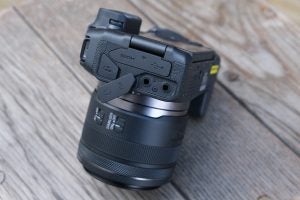
Lastly, as is fairly typical for Canon cameras, there are constraints on the EOS RP’s video powers when shooting in 4K. In this mode, it uses contrast-based AF rather than Dual Pixel AF and incurs a 1 .6x crop (effectively reducing the sensor to APS-C size). It also only shoots at 24p or 25p in 4K, with 60p only available when shooting in Full HD, and there are no slo-mo modes for the latter either.
Still, if you’re aware of those limitations, the EOS RP’s fast, reliable autofocus and full-frame sensor can help you snag some excellent stills (in JPEG or RAW) and video too…
Canon EOS RP – Image and video quality
The EOS RP uses the same sensor as the Canon EOS 6D Mark II, which is mostly good news when it comes to image quality.
It shoots great JPEGs out of the camera, with the solid auto-white balance helping to produce natural-looking shots with plenty of detail. If this is how you mainly shoot, you’ll be very pleased with the results whether you’re using native RF lenses or adapted EF lenses. When using EF-S lenses with the adaptor, though, photo resolution drops to 10-megapixels, so it’s less compelling if you have a stash of those.

The EOS RP’s out-of-camera JPEGs have great colours and detail, without going overboard into unrealistic oversaturation.
If you like to shoot in Raw and tinker with your images afterwards, which most prospective EOS RP owners will, then it’s worth knowing that (like the 6D Mark II) it has relatively low dynamic range at low ISOs. This means you can’t rescue as much detail out of the shadows as you can with more recent full-frame or APS-C sensors, although you can still pull out a decent amount of info from shadowy areas.

Although the EOS RP’s extended ISO settings are best avoided, you can get great results even up to ISO 12,800, which is useful for handheld indoor shooting.
In our lab tests, the Canon EOS RP performed largely as expected for a 26-megapixel sensor and mostly the same as the Canon EOS 6D Mark II – which isn’t surprising, given it uses the same sensor.
Resolution drops slightly at ISO 3200 and only very slightly more at ISO 12,800. That’s about the point where detail starts to fall off sharply though, while JPEG files have slightly lower resolution due to more aggressive noise reduction.

In mixed lighting, the EOS RP errs on the side of clipping highlights when shooting JPEGs – if you shoot to preserve them in RAW, then the shadow recovery isn’t as extensive on some rivals.
In terms of noise performance, the EOS RP was excellent at low ISOs, with attractive colours and lots of detail. A word of warning though – the ISO 50 setting clips highlights more readily than ISO 100, so needs to be used with care.
There was barely any drop in quality at ISO 1600, with plenty of detail and strong colour, and even ISO 6400 gave very good results in terms of noise, although shadow detail started to block up. Most people will be perfectly happy with the results at ISO 12,800, and maybe even ISO 25,600 at a pinch, but the higher extended settings are best avoided.
When it comes to video, the EOS RP performs well, as long as you’re aware of the limitations mentioned in the ‘features and performance’ section (no Dual Pixel autofocus in 4K, and a pretty tight crop in that mode). Shoot in Full HD, though, and the autofocus performs well, with face-tracking only briefly hunting on occasion. It’s a shame there are no higher frame rate options for slo-mo video though.
Should I buy the Canon EOS RP?
If you already own an older Canon DSLR and EF lenses, or just like the Canon shooting experience, then the EOS RP is a strong full-frame upgrade that mixes traditional DSLRs strengths with many of the advantages of mirrorless.
It’s small, light and has excellent autofocus that performs well in most conditions, including gloomy ones. Thanks to its handling and intuitive controls, it’s a fun camera to shoot with too, although it feels most at home with smaller lenses rather than the currently hefty native ones available for the RF mount.
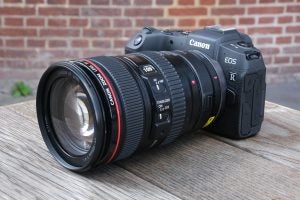
The limited burst shooting rate and 4K video mode mean action shooters and vloggers will probably want to look at smaller sensor options like the Fujifilm X-T3 and Canon EOS M50. The EOS RP’s older sensor means it doesn’t dramatically outperform rivals like the former either, so those without any existing Canon kit will likely still be better off with a similarly-priced rival like the X-T3 (or waiting for the rumoured Nikon Z5).
If you do have some EF lenses, though, then you’ll find that these work well with the EOS RP via the bundled adaptor, giving you plenty of options while you wait for Canon to flesh out that native RF lens range. That range is currently a slight mismatch for a small, affordable body like the EOS RP, although an RF 24-240mm f/4-6.3 zoom is expected to arrive in the second half of 2019.
Trusted Score
Features
| Camera type | Mirrorless Camera |
| Megapixels (Megapixel) | 26.2 |
| Shutter speed | 30-1/4000sec + bulb |
| ISO settings | 50-102,400 |
| LCD Monitor | 3-inch, 1.04-million dot fully articulated |
| Video (max res/format) | 4K, 25p |
Physical Specifications
| Dimensions Width (Millimeter) | 132.5 |
| Depth (Millimeter) | 85.0 |
| Length (Millimeter) | 70.0 |
| Weight (body only) (Kilogram) | 485 |


